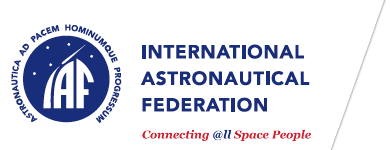ForFabSat: A Research Factory to Analyze Series Production for Networks of Small Satellites
- Paper number
IAC-24,D1,2,10,x88746
- Author
Dr. Florian Leutert, Zentrum für Telematik, Germany
- Coauthor
Mr. Markus Krauss, Zentrum für Telematik, Germany
- Coauthor
Dr. Markus Scholz, Zentrum für Telematik, Germany
- Coauthor
Prof. Klaus Schilling, Zentrum für Telematik, Germany
- Year
2024
- Abstract
The paradigm shift from traditional manufacturing of few satellites to hundreds of satellites for mega-constellations in low Earth orbits (LEO) poses new challenges for satellite design, development process and production in space industry. Increasing automation and the industrialization of manufacturing processes will play a key role here. This contribution summarizes the concepts and methods applied to implement related capabilities step by step in the research factory ForFabSat. Advanced industrial production methods of industry 4.0 and digital twins, as in automotive or consumer electronics mass markets, are adapted to the specifics of satellite production for hostile space environment. Here, in particular integration of time-consuming test procedures into the production process require special attention. Depending on targetted satellite quantities, different levels of cooperation between automation systems with robots and human workers are to be realized to be most cost-efficient. In ForFabSat capabilities are provided to analyze and compare for different production steps alternative approaches. In ForFabSat the technology readiness level (TRL) for satellite series production is planned to be increased from the current laboratory factory with implemented first exemplary integration and test cells at a TRL about 3 to an integrated research factory with TRL 5. A planned output capacity of more than 300 satellites per year will be realized through a sophisticated logistics concept including external suppliers. The research factory can be booked and accessed by industry as infrastructure via closed innovation cells, where companies can further analyze and optimize their specific products in crucial production steps . For implementation of future multi-satellite formations, in particular new tests related to the interaction between the satellites are to be included. Beyond traditional space environment tests (radiation, thermal vacuum cycling, vibrations, etc.) new challenges concern cooperative networked satellite system control, inter-satellite links, autonomous reaction capabilities, relative navigation, collision avoidance, etc.. Related hardware and software systems are to be characterized by hardware-in-the-loop-tests before launch. These aspects were already addressed in the NetSat formation mission (4 satellites; launched 2020) and are further expanded to current formations, such as CloudCT with 10 satellites self-organizing for joint observations of clouds for improved climate predictions.
- Abstract document
- Manuscript document
IAC-24,D1,2,10,x88746.pdf (🔒 authorized access only).
To get the manuscript, please contact IAF Secretariat.
